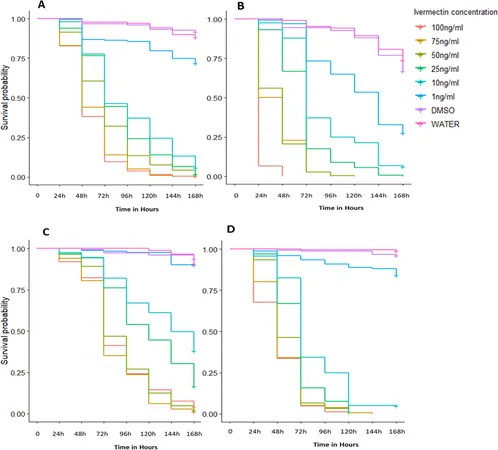
Unlocking the Secrets of Ivermectin: Impacts on Mosquito Larvae Survival and Development
2025-07-08
Author: Wei
The Power of Ivermectin: A Multifaceted Solution
Ivermectin, a potent drug from the avermectin family, is primarily used as a dewormer in both veterinary and human medicine. By disrupting the signal transmission in nerve and muscle cells of parasites, it leads to paralysis and death. In humans, it combats serious conditions like river blindness and lymphatic filariasis, while in animals, it’s effective against various ectoparasites.
Environmental Concerns: Ivermectin's Aftermath
Despite its benefits, the consequences of ivermectin on ecosystems are becoming increasingly concerning. The drug is poorly metabolized and a staggering 80-98% of dosages are excreted, often contaminating the environment through livestock waste. Such residues can severely impact dung beetles and other insects that play crucial roles in ecosystem functions.
Mosquitoes Under the Microscope: Anopheles vs. Aedes
The study highlighted the effects of ivermectin on Anopheles coluzzii and Aedes aegypti, two significant mosquito species responsible for transmitting deadly diseases like malaria and dengue. With declining effectiveness of traditional vector control methods, ivermectin presents a potential complementary strategy in combating adult mosquito populations.
A Deep Dive into Larval Exposure: What Did They Find?
The research set out to investigate how ivermectin influences larval survival, development, and the future reproductive capabilities of female mosquitoes. It compared laboratory-reared and wild mosquito strains to assess their susceptibility to the drug.
Stark Differences in Survival Rates
Results revealed that wild-derived larvae, such as those from An. coluzzii, showed greater resilience to ivermectin compared to their lab-reared counterparts. While laboratory strains like An. gambiae exhibited alarming death rates with even low doses of ivermectin, the wild strains managed to survive better against higher concentrations, hinting at unique genetic adaptations.
Fecundity: The Future of Mosquito Populations at Stake
Interestingly, even with exposure to ivermectin, the fecundity of surviving adult females was not significantly impacted. This raises concerns that the ability of female mosquitoes to reproduce may continue, enabling potential population recovery even after exposure.
Heading Towards a Cautionary Future
While ivermectin shows promise as a larvicide that could be pivotal in malaria control efforts, its environmental implications cannot be overlooked. Understanding the potential risks of contamination to non-target species and ecosystems is essential. This study underscores the need for thorough environmental assessments before large-scale applications of ivermectin.
Next Steps: Expanding Research Horizons
Further research is needed across varied geographic locations and mosquito life stages to comprehensively assess vulnerabilities and resistance levels to ivermectin. Insights gained could significantly bolster mosquito management strategies in the ongoing battle against vector-borne diseases.


 Brasil (PT)
Brasil (PT)
 Canada (EN)
Canada (EN)
 Chile (ES)
Chile (ES)
 Česko (CS)
Česko (CS)
 대한민국 (KO)
대한민국 (KO)
 España (ES)
España (ES)
 France (FR)
France (FR)
 Hong Kong (EN)
Hong Kong (EN)
 Italia (IT)
Italia (IT)
 日本 (JA)
日本 (JA)
 Magyarország (HU)
Magyarország (HU)
 Norge (NO)
Norge (NO)
 Polska (PL)
Polska (PL)
 Schweiz (DE)
Schweiz (DE)
 Singapore (EN)
Singapore (EN)
 Sverige (SV)
Sverige (SV)
 Suomi (FI)
Suomi (FI)
 Türkiye (TR)
Türkiye (TR)
 الإمارات العربية المتحدة (AR)
الإمارات العربية المتحدة (AR)